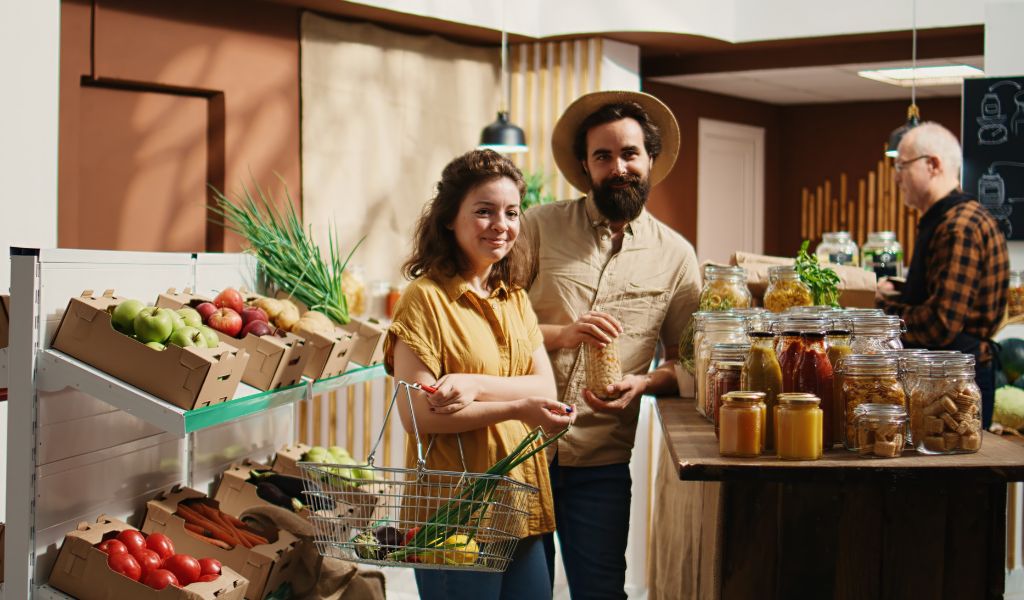Why Neighborhood Grocers Are The New Boutique Retail Experience: The Shift In Grocery Business In Australia
27 June 2025
5 Mins Read

toc impalement
Grab your eggs, bread, and milk!
Does your morning begin like this? You rush to the local grocery store, collect the items, and again run back home.
But is it so? Are grocery stores about the few minutes or hours we spend there collecting the essentials and paying the bills? No, it is not.
A grocery store is where we curate the monthly essentials based on our budget plans. Often, we make the monthly budget or decide on a weekly menu.
Also, as a regular visitor, I have seen how the grocery stores are changing.
Across Australian suburbs, local grocery stores are quietly transforming into curated, community-first spaces. They’re offering more than just produce; they’re also offering an experience.
- Today’s consumers are seeking authenticity.
- They want organic vegetables with the soil still clinging to them.
- Also, they prefer locally roasted coffee with handwritten tags.
- They want heritage eggs in biodegradable cartons.
However, along with the products themselves, their presentation is also capturing attention. So, the cornerstones of today’s grocery businesses are going to be:
- A boutique retail experience
- Focused curation
- Visual storytelling
- A strong sense of identity
Therefore, whether you are a new entrant to the Australian grocery market or an established player in this industry, it is essential to understand, acknowledge, and implement these changes for your long-term sustainability.
Hi, in today’s article, we will discuss the evolution of neighborhood shopping in Australian suburbs and how local businesses are coping with it.
The Evolution Of Neighborhood Shopping In Australia: What Are The Visible Changes?
The Australian grocery market was at AUD 140.73 billion in 2024. Further, with an expected CAGR of 5.40% from 2025 to 2030, it is likely to reach AUD 238.12 billion by 2034.
Considering the massive growth rate and steep competition, it is essential for every grocer to adopt these changes. A grocery store today cannot afford to be a utility center, and it has to offer a personalized experience.
1. The Power Of Curation In The Corner Store
One key change is selection. Rather than overwhelming shoppers with twenty brands of pasta, many grocers now prefer to carry fewer products with more meaning.
Local producers, seasonal goods, and ethically sourced items take precedence. And with fewer SKUs on display, every item must justify its presence, not just by quality, but by how well it aligns with the store’s story.
It’s a win-win: shoppers get quality over quantity, and grocers build trust by showcasing their taste and values.
This level of thoughtful selection turns the act of grocery shopping into something far more personal—and, dare we say, enjoyable.
2. Visual Identity Matters (Even In The Aisles)
This new wave of grocers isn’t just defined by their stock. How products are arranged, the design of store signage, and even the typography used on chalkboard menus are part of the story.
It’s not uncommon to find custom illustrations, earthy tones, and nods to local culture in these environments.
And the products themselves? They’ve evolved, too. Shoppers are more design-literate than ever, and they expect packaging that reflects quality and intent.
A poorly designed label now sticks out like a sore thumb among craft vinegar and artisanal bread. That’s where the influence of a packaging design agency becomes apparent—even if shoppers don’t realize it.
3. Packaging: The Shelf-Level Salesperson
They say that you must not judge a book by its cover. However, we always do that in our everyday lives.
- We visit the grocery store.
- We check the packaging.
- And we buy the products.
So, here, you cannot deny the fact that packaging is an important tool for the products inside. We are paying for the product inside. However, packaging is becoming the decision-making factor.
Think of it as the silent pitch that communicates a product’s origin, purpose, and promise in seconds.
This is particularly critical for smaller food brands that may only have limited shelf space. Clean labels, legible fonts, compelling visuals—these aren’t just aesthetic choices, they’re strategic ones.
A good packaging design agency understands how to balance storytelling with compliance, sustainability, and shelf standout.
That level of intention matters when you’re sharing shelf space with ten other locally made hot sauces.
The Evolution of Neighborhood Shopping: Why Community Is The Ultimate Differentiator
More than anything, it’s the sense of belonging that separates neighborhood grocers from the bigger players. Staff often know regulars by name.
There are handwritten notes beside produce (“Perfect for roasting tonight!”). You might even see a Polaroid wall of local suppliers. These gestures turn routine shopping into a relationship.
Boutique experiences are rarely about scale; they’re about depth. The local grocer who offers a few handpicked goods, a moment of conversation, and a paper bag stamped with their logo creates a moment of connection that’s hard to replicate in a major chain.
Social Media Loves A Beautiful Shelf: The Evolution Of Neighborhood Shopping And A Design-First Approach
The design-first approach is also paying off online. Instagram and TikTok have become unexpected allies for these grocers.
Shoppers love to share beautifully packaged products and aesthetically arranged shelves. It’s free marketing powered by customers who are excited to promote what feels like their store.
And for small producers, getting featured on a grocer’s feed can be just as valuable as formal advertising.
When packaging design, product quality, and store identity align, a corner shop becomes more than a store—it becomes a lifestyle destination.
The Evolution Of Neighborhood Shopping In Australian Suburbs: Small Scale, Big Impact
Neighborhood grocers aren’t trying to compete with supermarkets on scale or convenience. Instead, they’re redefining what retail can be: curated, beautiful, and rooted in community.
And at the center of it all is design. From the store layout to the products on the shelves, every element is part of a thoughtful brand story.
Whether it’s a boutique hot sauce or a handmade tea blend, the right packaging can turn a quiet corner-store product into a brand people talk about, post about, and come back for.
The rise of boutique-style neighborhood grocers proves that small doesn’t mean limited. When done right, it means considered, connected, and full of character—something no algorithm can replicate.

















